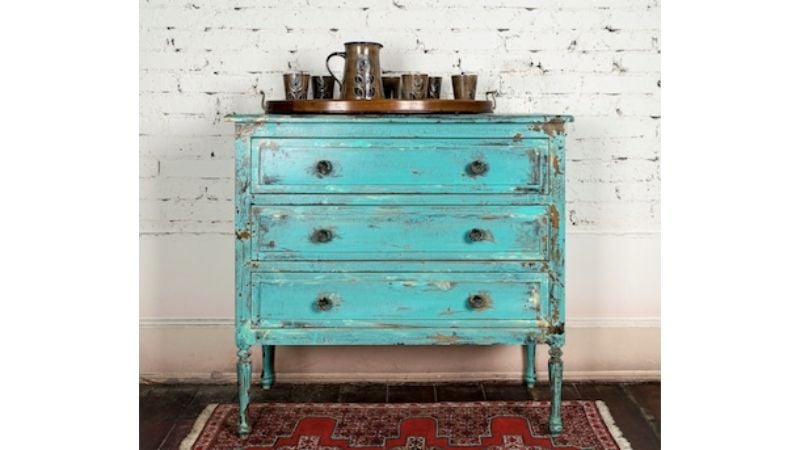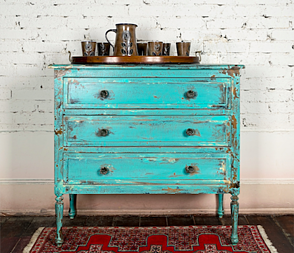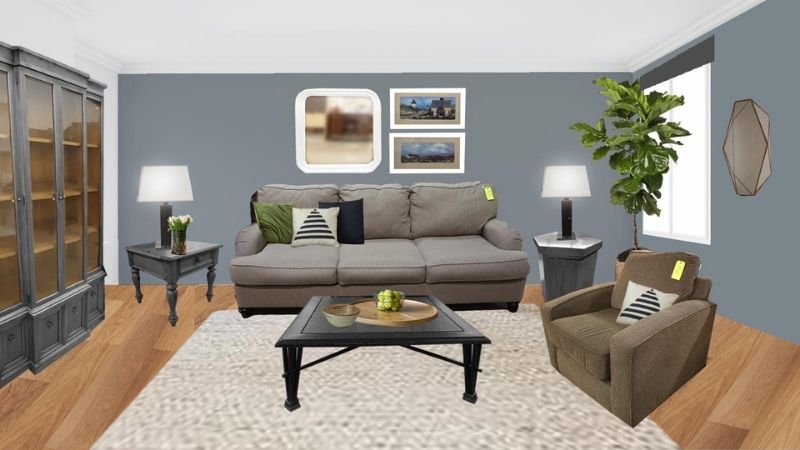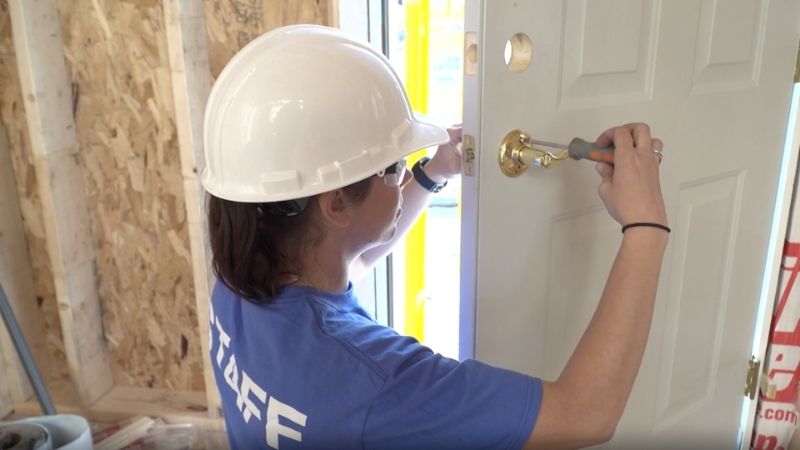Transform your living room for under $500
Finding the right furniture for your new home can feel like solving a puzzle. You want pieces that look good, will last through family life, and...
3 min read
 ReStore Staff
:
1:47 PM on August 13, 2025
ReStore Staff
:
1:47 PM on August 13, 2025


You don’t have to be a home décor expert to know that the rustic scheme rarely goes out of style, nor does the look of distressed antique furniture. But sometimes it can be difficult to find a rustic one-of-a-kind piece still in good condition.
This is where we challenge you to think outside the box, because achieving that antique look for your wood furniture is possible—if you're up for a fun project.
Finding the perfect piece to transform starts with knowing what to look for. The next time you find a used table that’s in excellent condition but lacks the character you love about antique finishes, don't brush it off. Discover ways to distress furniture to get the look you want.
With distressing, remember that not all furniture pieces are created equal.
Solid wood pieces are your best bet.They respond beautifully to distressing techniques and give you that authentic antique look. When you're browsing, look at the wood grain on pieces with visible patterns that will create more character once distressed.
Don't overlook pieces with imperfections. It actually adds charm to your finished project. Since ReStore inventory changes daily with new donations, visit regularly and ask staff about recent arrivals that might be perfect for your project. Focus on the structure and imagine what the piece could become with a little creativity.
How it distresses: Antiquing glaze is available in liquid form and glides on easily with a brush. You'll probably want to remove much (if not most) of the glaze with a lint-free cloth so that only a hint of the dark, moody color remains behind.
Where it works best: On handles, knobs and pulls, on cool colors that can benefit from some warmth, and on wood grains that are worth calling attention to.
How it distresses: Chalk paint results in a matte, chalk-like appearance, which can be further distressed by sanding or removing paint with steel wool.
Where it works best: On large or imperfect pieces. Chalk paint is a novice's dream: it requires no prep work (besides cleaning the surface) and you can achieve great results with your first attempt.
How it distresses: A little planning can produce a stunning, two-tone effect. Apply jelly to areas where you want the base coat to show through. Wait for the jelly to set before painting or staining the furniture (or parts of it) a contrasting color. Then lightly sand the jellied areas. The top coat won't stick to these areas, revealing the two-tone effect.
Where it works best: Large, ordinary pieces of furniture desperate for an infusion of character.
How it distresses: Dry brushing requires a small amount of paint applied lightly over a previous coat. This two-step process – removing as much paint from the brush as possible and then using a light touch to apply what's left – requires restraint. But it's one of the surest ways to distress furniture like a pro.
Where it works best: Anywhere you wish to add visual interest, but especially on tall, vertical sections or long, horizontal sections of furniture.
How it distresses: Removing paint with a sanding block or hand sander gives you great control over where you want wear to be visible on a piece of furniture. But once the paint is gone, it's gone, so it's best to use a light touch and begin on a somewhat hidden area to distress furniture.
For more aggressive distressing, carefully use tools like keys or wire brushes to create authentic wear marks.
Where it works best: Around edges and handles, where many antique pieces show the most wear, too.
How it distresses: Removing paint with a paint stripper isn't the ordeal it used to be—plenty of natural, chemical-free products are available that make removing paint with a scraper simple and straightforward. The trick with stripping is not going down to the bare wood.
Where it works best: On pieces with either many layers of paint or a heavily lacquered finish.
Before you head to ReStore, know what makes a piece worth bringing home.
The best furniture for distressing has solid wood construction–you can test this by tapping the surface, as solid wood produces a deeper sound than particleboard. Check for tight joints and stable structure, since wobbly legs will only get worse once you start working on the piece.
Look for minimal hardware that's easy to remove and pieces with good bones, regardless of their current finish. With a little patience and the right eye for potential, you'll find the perfect piece to transform.
Distressing furniture is both fun and rewarding, especially if you practice first to ensure that you're exerting the right amount of force or emphasis. To keep your losses to a minimum, practice on a scrap piece of wood. In no time, you’ll have the skills to create the look you’ve always wanted.
Have furniture pieces you're ready to part with? Your donations could become someone else's perfect distressing project.
If reading this blog inspires you to go on a furniture treasure hunt, come check out a ReStore location. We get furniture donations every day that may be perfect for this type of project, and there are always pieces you won’t find anywhere else!
Your gift unlocks bright futures! Donate now to create, preserve, and promote affordable homeownership in the Twin Cities.

Finding the right furniture for your new home can feel like solving a puzzle. You want pieces that look good, will last through family life, and...
![DIY Lane Chest Transformation [VIDEO]](https://restore.tchabitat.org/hubfs/chest%20header.jpg)
A little creativity and some elbow grease can give a piece of furniture a new life—and a completely new look! In this episode of DIY Friday, Jan...

After any Minnesota winter, it's easy to get excited about summer do-it-yourself projects. And with our seasons, we don't have all that long before...